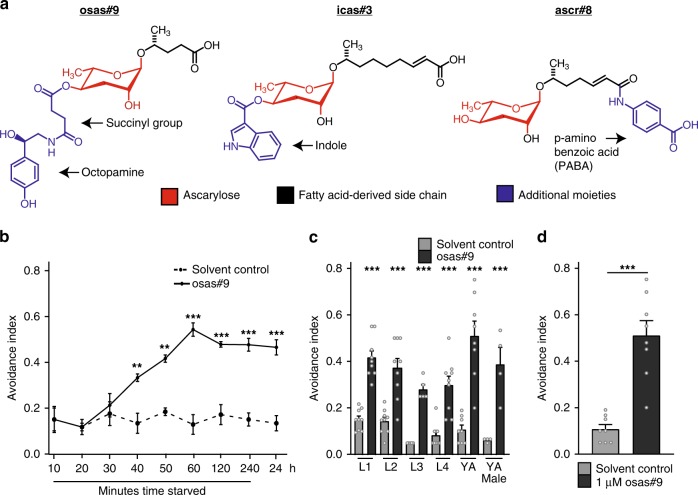Fig. 1.
osas#9 is repulsive to starved animals. a Structural and functional diversity of ascarosides. osas#9 is involved in avoidance, icas#3 attracts hermaphrodites, and ascr#8 attracts males at low concentrations and induces dauer formation at high concentrations. b Avoidance to osas#9 is dependent on the physiological state of C. elegans. Avoidance index of young adult (YA), wild type (N2) animals in response to solvent control (black dotted line), and 1 µM osas#9 (black solid line) after different time points after removal from food. After 40 minutes of starvation, animals begin to avoid osas#9, with the response reaching a plateau at 60 min. n ≥ 3 trials. Note for all other assays, unless otherwise stated, animals are starved for at least 60 min. c All life stages of hermaphrodites, and adult males, avoid osas#9 when starved. n ≥ 4 trials. d Avoidance index for starved young adult (YA) wild-type worms in response 1 µM osas#9. n = 8 trials. 1 µM osas#9 concentration was used in all other assays unless stated otherwise. Data presented as mean ± S.E.M; *p < 0.05, **p < 0.01, ***p < 0.001, one factor ANOVA with Sidak’s multiple comparison posttest, except for Fig. 1d, where a Student’s t-test was used. Individual data points for each bar graph are represented as gray circles

